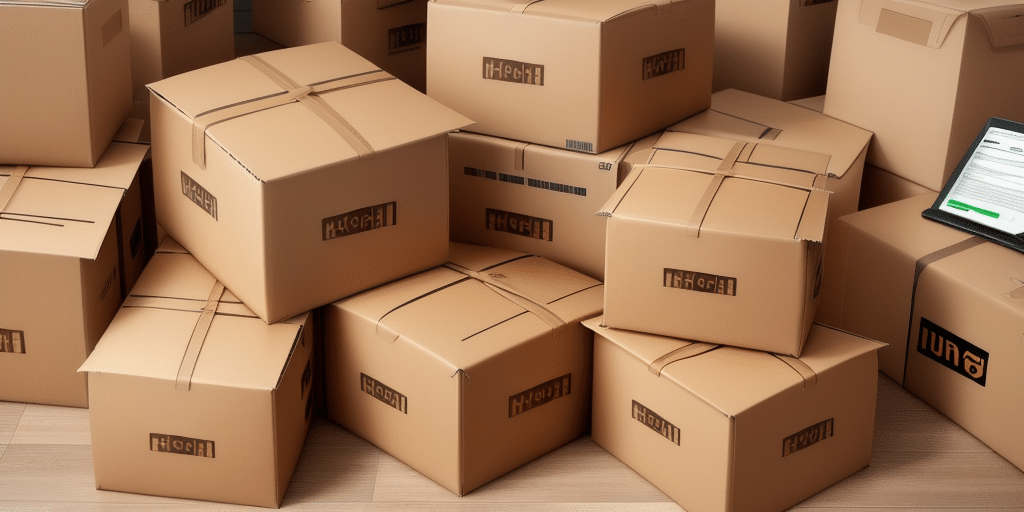Why Order Tracking is Essential for Ecommerce
Ecommerce has revolutionized the way we shop, but it has also created a need for reliable order tracking. With online shopping, customers expect to know the status of their orders at all times, from the moment they make a purchase until the product arrives at their doorstep. Order tracking provides this visibility, giving customers peace of mind and reducing their anxiety about their orders. Furthermore, it allows businesses to optimize their shipping process, identify areas of improvement, and provide better customer service.
One of the key benefits of order tracking is that it helps businesses reduce the number of customer inquiries related to order status. When customers can easily track their orders online, they are less likely to contact customer service for updates. This frees up customer service representatives to focus on more complex issues and provide better support to customers who need it.
Additionally, order tracking enables businesses to identify potential issues within their shipping process. By monitoring the status of orders and tracking delivery times, businesses can pinpoint patterns and trends that may indicate problems with their shipping carriers or internal processes. This information can then be used to make improvements and ensure that customers receive their orders in a timely and efficient manner.
The Basics of Ecommerce Order Tracking
When an order is placed, a unique tracking number is generated, allowing customers to follow their shipment online. This tracking number can be entered on the carrier's website to provide detailed information about the order's current status, location, estimated delivery date, and any exceptions or delays.
It's important to note that not all carriers offer the same level of tracking information. Some provide basic updates, while others offer more detailed insights, such as the name of the delivery driver and the exact time of delivery. Additionally, some carriers may require a signature upon delivery, which can also be tracked through the online system. Customers should check with their carrier to understand the level of tracking information available for their shipments.
Key Order Tracking Statuses
Scheduled Delivery
Scheduled delivery is a notification that informs customers of the expected delivery date of their order. This date is calculated by the carrier based on the shipping method selected, the carrier's delivery schedule, and any potential delays or exceptions that may affect the delivery date. Businesses rely on scheduled delivery to ensure timely delivery and manage their inventory effectively.
Pending Status
Pending status indicates that the order has been received but has not yet been processed. This can occur for various reasons, such as payment processing or inventory verification. Pending status is temporary and typically lasts for a few hours or days until the order is processed and moves to the next status.
Awaiting Delivery
Awaiting delivery means that the order has been processed, packed, and shipped, and is now in transit to the customer's shipping address. This status is crucial as it signals that the order is on its way. However, delays or exceptions can affect the delivery date, so it's important to monitor tracking information to ensure a successful delivery.
- Weather Conditions: Extreme weather events like hurricanes, snowstorms, or floods can disrupt transportation and delay deliveries.
- Incorrect Shipping Information: Providing incorrect or incomplete shipping information can lead to packages being returned to the sender or delayed in transit.
Scan Status
Scan status notifies customers and businesses that the carrier has scanned the package at a particular location. This scan provides valuable information about the package's whereabouts and verifies that it is in transit. Additionally, scan status can indicate any issues or delays, such as weather conditions or customs processing.
Real-time tracking through scan status offers peace of mind to customers and allows businesses to improve their logistics and supply chain management. However, it's important to ensure that scanning is accurate to prevent confusion and frustration.
Best Practices for Managing Order Tracking
Handling Delayed Scheduled Deliveries
- Communicate Promptly: Inform customers immediately if there are delays due to weather, carrier issues, or customs.
- Verify Shipping Information: Ensure that all shipping details are accurate to prevent unnecessary delays.
- Plan for High Demand: Anticipate and prepare for periods of high demand to maintain timely deliveries.
Managing Pending Orders
To minimize pending orders, businesses should keep their inventory up to date and accurately reflect available products. Proactive communication with customers about any issues affecting their orders and offering solutions or alternatives can effectively resolve pending statuses.
Resolving Awaiting Delivery Issues
If there are any delays or issues with an awaited delivery, businesses should notify customers promptly and offer alternative solutions, such as expedited shipping or refunds. Collaborating with carriers to resolve issues quickly ensures customer satisfaction.
Efficient Scan Status Management
- Partner with Reliable Carriers: Work closely with carriers to ensure timely and accurate scanning of packages.
- Leverage Technology: Utilize automated tracking and notification systems to manage scan statuses effectively.
- Communicate Clearly: Provide regular updates to customers regarding the status of their packages.
Enhancing Customer Experience with Accurate Order Tracking
Accurate order tracking is vital for improving customer experience and building loyalty. Providing timely and precise tracking information reduces customer anxiety, increases trust, and enhances a business’s reputation. Additionally, tracking data can help businesses identify areas for improvement and deliver better customer service.
- Proactive Communication: Inform customers about potential delays or issues before they become problems.
- Data-Driven Insights: Analyze tracking data to understand customer behavior and optimize marketing and sales strategies.
- Operational Efficiency: Use tracking information to streamline operations, manage inventory effectively, and reduce costs.
Future Trends in Ecommerce Order Tracking Technology
The ecommerce landscape is continually evolving, leading to advancements in order tracking technology. Future trends may include:
- Artificial Intelligence and Machine Learning: These technologies can predict delivery times more accurately and proactively resolve issues before they affect customers.
- Blockchain Technology: Offers greater transparency and security in the order tracking process, ensuring data integrity and reducing fraud.
- Internet of Things (IoT): IoT devices can provide real-time location tracking and environmental monitoring of packages, enhancing the transparency of the delivery process.
Choosing the Right Logistics Partner for Seamless Order Tracking
Selecting the appropriate logistics partner is crucial for ensuring seamless order tracking. Businesses should consider the following when choosing a carrier:
- Reliable Tracking Information: Ensure the carrier provides detailed and accurate tracking updates.
- Flexible Shipping Options: Offer various shipping methods to meet different customer needs and preferences.
- Excellent Customer Service: Partner with carriers that have a strong reputation for customer support and issue resolution.
- Extensive Delivery Networks: Choose carriers with comprehensive delivery networks to ensure timely and efficient deliveries.
By carefully selecting a logistics partner that aligns with their needs, businesses can enhance their order tracking capabilities and overall customer satisfaction.
Conclusion
Understanding ecommerce order tracking statuses is critical for providing an excellent customer experience, optimizing shipping processes, and building customer loyalty. Businesses should leverage this knowledge to refine their order tracking systems, collaborate effectively with carriers to resolve issues promptly, and stay abreast of the latest trends in ecommerce order tracking technology.






















